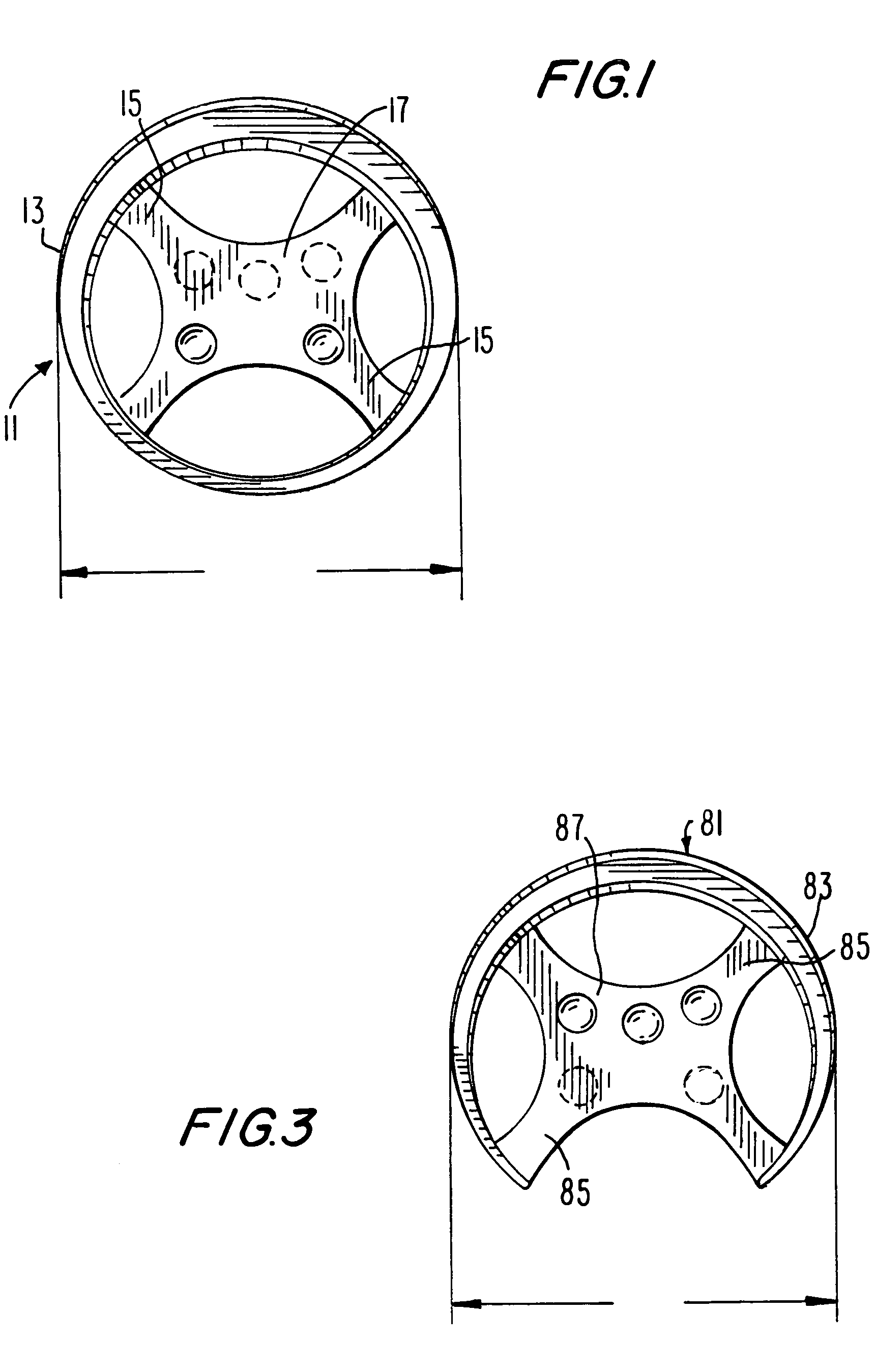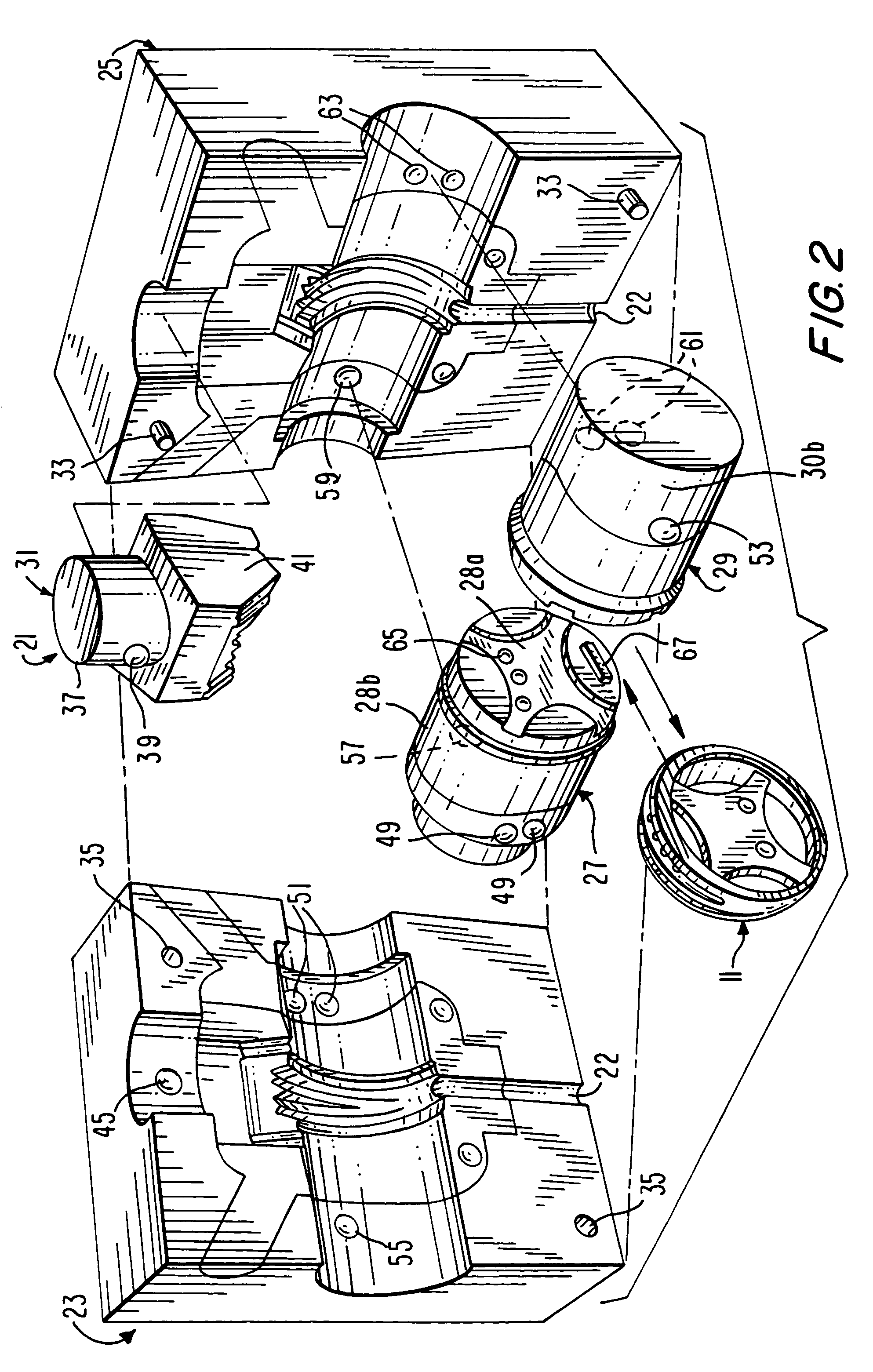Hollow jewelry ring design
a hollow and jewelry technology, applied in the field of hollow jewelry ring design, can solve the problems of not teaching the unable to achieve proper alignment of inserts and prevent, and less than desirable use of soluble wax core inserts
- Summary
- Abstract
- Description
- Claims
- Application Information
AI Technical Summary
Benefits of technology
Problems solved by technology
Method used
Image
Examples
Embodiment Construction
[0038]Referring first to FIG. 1, a metal ring model which is used in producing a ring mold is generally indicated at 11. Metal ring model 11 consists of a shank 13, an internally extending plate element 17 supported along the internal perimeter of shank 13 and a plurality of extending fingers or spokes 15. Metal ring model 11 has an external shape identical to the jewelry ring that is to be produced in accordance with the invention. Shank 11 has a flat finger facing surface with rounded or beveled edges. Metal plate 17, including fingers 15, are provided for enabling production of a core insert with a supporting plate and for thereby defining the extent to which the shank of the ring to be produced is hollowed or bored out, as described. Metal ring model 11 is used, as is well known in the art, to then prepare a vertically oriented mold thereof, as shown in FIG. 2.
[0039]Referring now to FIG. 2, a metal ring mold produced from metal ring model 11 depicted in FIG. 1 is generally indic...
PUM
| Property | Measurement | Unit |
|---|---|---|
| angle | aaaaa | aaaaa |
| thickness | aaaaa | aaaaa |
| thickness | aaaaa | aaaaa |
Abstract
Description
Claims
Application Information
 Login to View More
Login to View More - R&D
- Intellectual Property
- Life Sciences
- Materials
- Tech Scout
- Unparalleled Data Quality
- Higher Quality Content
- 60% Fewer Hallucinations
Browse by: Latest US Patents, China's latest patents, Technical Efficacy Thesaurus, Application Domain, Technology Topic, Popular Technical Reports.
© 2025 PatSnap. All rights reserved.Legal|Privacy policy|Modern Slavery Act Transparency Statement|Sitemap|About US| Contact US: help@patsnap.com



